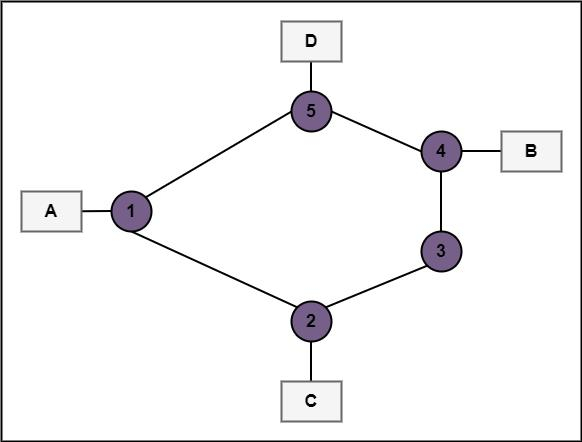
 Data Structure
Data Structure Networking
Networking RDBMS
RDBMS Operating System
Operating System Java
Java MS Excel
MS Excel iOS
iOS HTML
HTML CSS
CSS Android
Android Python
Python C Programming
C Programming C++
C++ C#
C# MongoDB
MongoDB MySQL
MySQL Javascript
Javascript PHP
PHP
- Selected Reading
- UPSC IAS Exams Notes
- Developer's Best Practices
- Questions and Answers
- Effective Resume Writing
- HR Interview Questions
- Computer Glossary
- Who is Who
What is Message Switching?
In message switching, the sending device joins the destination location to the communication and develops it to the network. The message is then generated by the web from one node to the other node, because it arrives at the predetermined destination.
Each switching hub gets a message, stores it momentarily and afterward, sends it to the following hub, as shown in the diagram below.
An example of message switching is emails, PC documents, telegrams and transaction queries and responses. A full exchange can include various messages.

If a message is transmitted from station A to station B, it can take either path 1-2-3-4 or 1-5-4 depending on the free output path's availability at that particular moment.
Advantages
The advantages of message switching are as follows −
There is no physical link between the source and the destination hub.
This method facilitates communication medium very efficiently, because the channels are used when messages are sent.
Disadvantages
The disadvantages of message switching are as follows −
As the message length is unlimited, and each node must have sufficient storage to store the messages.
This method is very low for interactive real-time applications.
Processing and control procedures are more complex.
Transmission overhead is increased, because each message requires an address and control header.
A message is delayed at each node.

